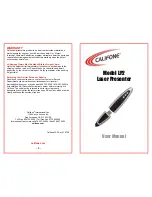
Colour Film
These films produce an image in colour after appropriate processing, corresponding directly or indirectly to the natural colours of the
subject. From the practical point of view, colour film is as easy to use as black-and-white film, but needs a little more care in
exposure. Processing is more complex and is often carried out by the film maker or specially appointed processing laboratories.
There are two types of colour film: reversal and negative.
Colour, Reversal Film
This produces a colour transparency on the actual film exposed in the camera. This transparency held up to the light shows a positive
image with all parts of the subject in their original colours. It can be viewed in a suitable transparency viewer with a magnifier or it can
be projected in a slide projector to give a large picture on a screen.
There is little doubt that the projected image is the most natural and best for showing colour.
Although the colour transparency is an end product. it can still be used to make:
(a) duplicate positive colour transparencies,
(b) a black-and-white negative which can then be used to produce black-and-white prints or enlargements,
(c) a colour negative for making colour prints and enlargemerits, as from colour negative film (described below),
(d) direct colour enlargements on colour reversal paper.
Colour prints on paper invariably show loss of colour quality as compared wish the original positive transparency.
For correct colour rendering, colour reversal films have to be carefully matched to the light by which they are to be exposed.
Accordingly, most makes are available in two or more of the following types:
(a) daylight colour film which will give correct colour reproduction in daylight or with blue-tinted flash bulbs,
(b) artificial light type colour film which will give correct rendering by photoflood or tungsten illumination,
(c) flash type colour film (type F) which will give correct rendering with the normal clear flash bulbs.
Colour films made for one kind of light may often be used under different light conditions with the aid of a conversion filter as
recommended by the manufacturer.
Different makes of colour film may yield transparencies of a slightly different characteristic colour quality, colour saturation and colour
www.mr-alvandi.com
Содержание 1000 F
Страница 18: ...WILD LIFE www mr alvandi com ...
Страница 52: ...THE CUT FILM ADAPTOR www mr alvandi com ...
Страница 54: ...Daylight Exposure Values www mr alvandi com ...
Страница 55: ...Filters for Black and White Film www mr alvandi com ...
Страница 57: ...Colour Temperatures and Light Sources Light Balancing Filter Data Filter Equivalents www mr alvandi com ...
Страница 59: ...Close Ranges with 50 60 mm Distagon and Planar 80 mm www mr alvandi com ...
Страница 60: ...Close Ranges with 120mm S PLANAR 150 200 mm SONNAR www mr alvandi com ...
Страница 61: ...Focusing Ranges with the Extension Bellows Shutter Speeds to Arrest Movement www mr alvandi com ...
Страница 62: ...Conversion of Film Speed Systems Colour Films www mr alvandi com ...
Страница 63: ...Black and White Films www mr alvandi com ...
Страница 64: ...www mr alvandi com ...











































